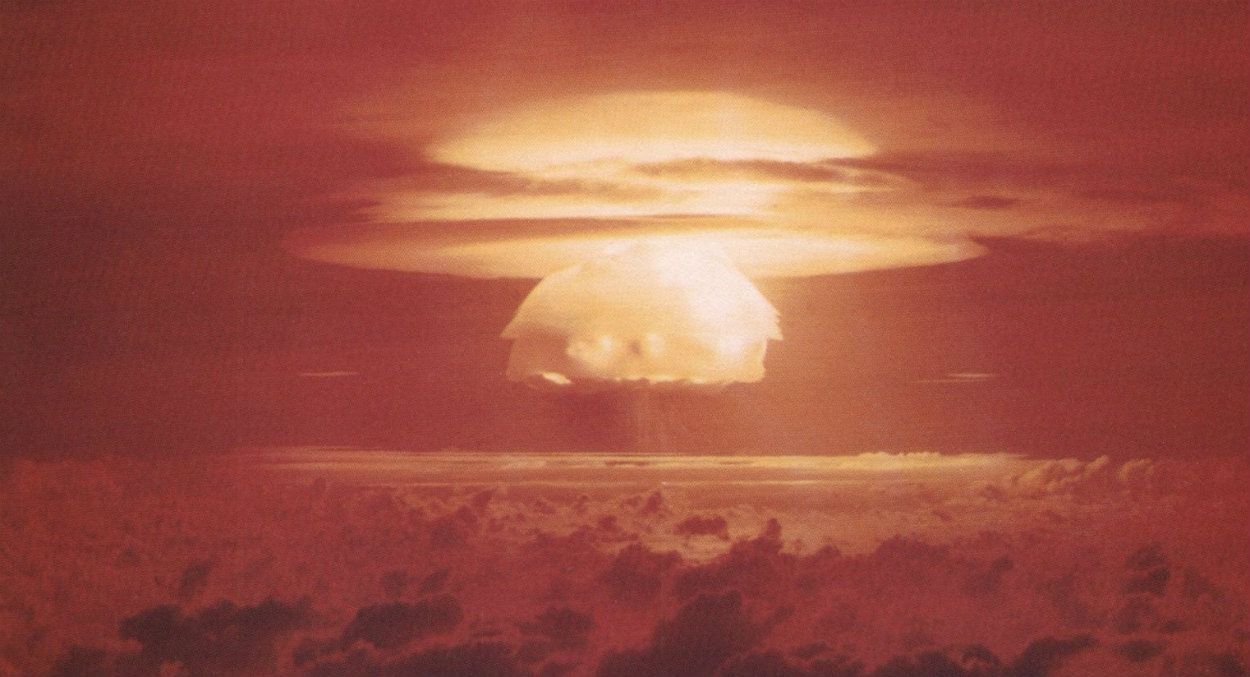I would have liked to have written an in-depth blog post this week, and on time. But I'll be saving that one for next week, and instead bringing your attention to something else: seventy years ago this month, the Bulletin of the Atomic Scientists unveiled its first Doomsday Clock—set at seven minutes to midnight—in an attempt to alert the public to the immediate dangers of all-out nuclear war.
Since 1947, the hand of the Doomsday Clock has oscillated back and forth—a sort of prophet of nuclear catastrophe. It's never claimed to be an accurate timekeeping device as to how soon some sort of nuclear conflict might actually occur. Rather, the clock is intended as a symbolic representation of how strained international relations and continued nuclear arms development have provided a recipe for disaster.

The United States' Castle Bravo nuclear test in 1953 was 1,000 times more powerful than the bombs dropped on Japan in WW2. Image: U.S. Department of Energy.
The closest we ever came was in 1953, when the United States and Soviet Union had both successfully tested their first Hydrogen Bombs. The clock jumped forward to two minutes to midnight, symbolizing an imminent nuclear war between the two superpowers unless critical peacekeeping measures were not taken.
Many events, such as the fall of the Soviet Union and the signing of the Nuclear Non-Proliferation Act, have had the effect of 'turning back the clock.' The safest we ever were (since WW2) was in 1991 when the Cold War officially ended, and the Bulletin of the Atomic Scientists turned the clock all the way back to seventeen minutes to midnight.
Perhaps it may be shocking to learn, then, that the risk of nuclear catastrophe is currently at the highest level it's been since 1953. This year, the Doomsday Clock was turned all the way up to two and a half minutes to midnight, citing increased nuclear tensions between India and Pakistan as one of the contributing factors (along with the election of Donald Trump, of course).
Perhaps it's no coincidence then that I'm currently traveling in India. That the reason my planned blog post is being delayed and this hastily thrown-together one being put up in its stead is that I've had severely limited internet access for the past week. And that by happenstance I'm only about 20 kilometers away from the India-Pakistan border at this very moment.
From where I am now, things don't seem that terrifying. Even though two nuclear powers sharing an uneasy border with one another and claiming that a preemptive nuclear strike could always be on the table, everyday life seems to flow unimpeded. Even though they're still skirmishing over the Kashmir region. Even though there's a relatively heavy military presence in this particular state (compared with others I've been in).
But things could always change. Acts of terrorism are an ongoing problem in both Pakistan and India, and it may be just a matter of time until someone gets provoked. The doomsday clock just keeps on ticking.
And as an illustration of just how prolific this problem is, if this year's minute-hands are to be believed, we're no safer today than our grandparents' generation was some seven decades ago—back when dropping two nukes on civilian populations was seen as a justified way to end a war (and which today would probably result in several prosecutions for crimes against humanity).
Maybe we have moved ahead socially, but in some sense we're still living with stone-age diplomacy—and just a stones-throw away from nuclear disaster. Here at one of the epicenters, despite the steady creep towards midnight, things seem calm enough. But maybe this deceptive calm is what's making the true gravity of our current situation seem a little less menacing than it actually is...




